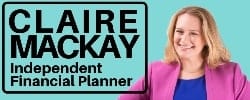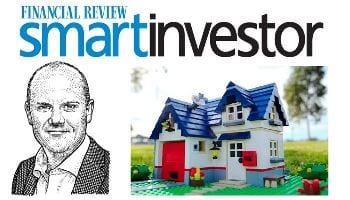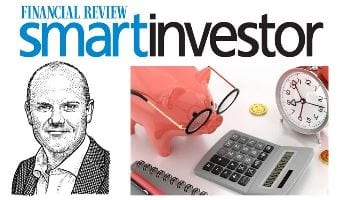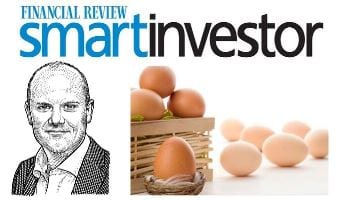Rather than hoping all your investments outperform the market, there is another approach that can help maintain an upward trajectory for your bottom line.
Have a good look at your current investment portfolio. What does each individual investment add to your portfolio? What overarching strategy can you see?
In my experience, there are a number of likely responses:
- I do it myself – I’ve built up 20 to 40 investments over the years including top 20 ASX shares, a few smaller companies or speculative punts, some rolling term deposits, a few managed funds, and ad-hoc investments (such as hybrids)
- I’m on a platform – my advisor has me in eight to 15 managed funds, with a few shares. I pay a fair bit in fees (not sure how much) but receive good paperwork for my tax returns. Some of the investments I’m not sure about and I’m annoyed they give very low rates for my cash and term deposits
- My portfolio is simple – I’m predominantly in term deposits and/or property, waiting for the market to show signs of recovery
- What portfolio? I don’t have the time or knowledge and/or I don’t trust anyone else to do it for me.
- In reality, few investors approach investing with clinical precision following a disciplined approach to filtering share investments, researching the best managed funds, and aligning individual investments with their financial goals.
Rather, most acquire ad-hoc investments over the years, buying the safety of blue chips or the latest ‘hot’ stock or funds based on a hunch, an article in the press or a tip from a friend. Before too long, they build up a laundry list of investments with their portfolio not reflecting an overall investing strategy.
So, if you identify with responses 3 or 4 above, once you decide to invest (or reinvest) in the market, it would be great to have a simple, yet powerful, tool to help you build your portfolio. If you relate to scenarios 1 and 2, perhaps you should re-evaluate whether your current investing approach is optimal.
A popular, proven approach to portfolio construction is ‘Core + Satellite’, a powerful investment strategy focusing on asset allocation and blending the benefits of both active and passive investing.
The Core of your portfolio comprises diversified, low cost passive investments (such as exchange traded funds – ETFs), while the Satellites comprise a fewer number of high conviction investing ideas (such as shares or funds you believe will outperform the market).
Core + Satellite provides the best of both worlds – immediate diversification while saving fees in the passive Core, complimented by best of breed investing ideas in the Satellites.
Low cost passive investments give you the market return (eg the ASX 200, ASX 20, etc). Active investments include selecting individual shares or managed funds, where you pay professional managers to hopefully outperform the index. You (or your fund manager) may be good (or lucky) at actively picking the best outperforming investments in a certain year, but even great investors struggle to do this consistently every year.
Simple building blocks in the Core
You can use term deposits, ASX listed exchange traded funds (ETF) and property to easily construct a diversified portfolio based on your target asset allocation. ETFs provide the ideal top tips Lego blocks for your Core, creating an efficient portfolio in a modular way as easily as snapping Lego pieces together.
Depending on how many high conviction ideas you hold, your Core may comprise 60 per cent to 100 per cent of your overall portfolio. You can construct your Core with a few investments, including term deposits and cheap and liquid ETFs, across blue chip shares (ASX 20), broad index shares (ASX 200), fixed income (bonds) and commercial property (A-REITs).
Outperformance in the Satellites
In your Satellites, identify themes, fund managers or individual shares you think will outperform the market. These could include sectors (eg resources, financials or healthcare), small caps, high dividend / imputation shares or emerging markets shares.
Rather than hoping that every investment in your portfolio will outperform the market, focus your efforts on a reduced selection of best of breed, high conviction Satellites. Adopting Core + Satellite enables you to become a more efficient investor.
Top Tips
- ETFs are tax efficient. Unlike active funds, ETFs don’t turn over their portfolio within 12 months and distribute realised capital gains within a 12 month period
- Savvy SMSF investors are among the biggest users of Core + Satellite and ETF investing
- Few investors hold a Core + Satellite portfolio on a platform – save fees by investing via an online broker.
_______________________
Tim Mackay BEc (Hons) MBA CA CFP SSA
I am an independent financial planner, SMSF expert and company director. I thrive on providing independent, expert financial advice to my wonderful clients. With international investment banking experience at Deutsche Bank and UBS in London and New York, I was recognised as SMSF Advisor of the Year by Independent Financial Advisor Magazine.
To contact me, speak to my team on 02 8084 0453. Please feel free to connect with me on LinkedIn or on Twitter. You can also visit the my colleague’s (and sisters) website.




